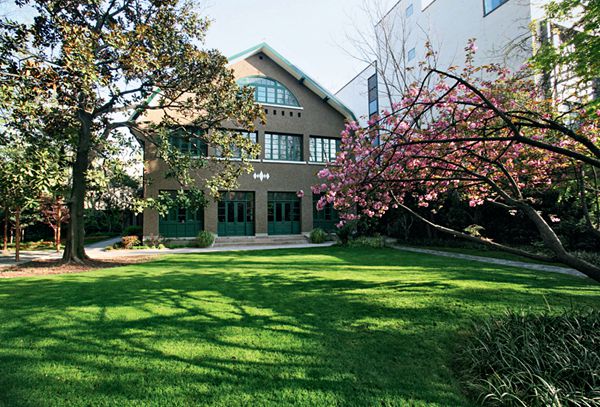Nostalgia in a Plane-tree-shaded Historic Area
China Today by XU ZHI, December 23, 2016 Adjust font size:
Another ship-like building – the former residence of Soong Ching Ling (Mme. Sun Yat-sen) – is also located in this district. This German-style house, with its red roof and white walls, is surrounded by luxuriant camphor trees and plants, and emits an impression of calm yet brilliance. Artworks and paintings which friends from China and abroad presented to her are on display here, among them old photos of Dr. Sun Yat-sen and Soong Ching Ling. Exhibits also include a graceful qipao that Soong Ching Ling frequently wore.

Chinese modern literature master Ba Jin wrote his classic works in his residence which from the outside looks austere.
Ba Jin, a master of Chinese modern literature, lived in this district for some years. His former residence looks austere from the outside, but houses a vast collection of books. It was here that Ba Jin wrote his classic works, including a collection of essays.
Huang Xing, one of the main leaders of the 1911 Revolution, lived in this district for several months. During his short stay, Dr. Sun Yat-sen visited him twice to discuss revolutionary matters. Huang devoted his life to the country’s democratic progress. In recent years, his former residence has been refurbished and adapted into a tourist information and art center, themed on time-honored architectures. Today, culture and tourism, rather than politics and revolution, are the topics under discussion here.
Most Chinese people are familiar with the comic book hero Sanmao. Painter Zhang Leping created this character in his tranquil house on a secluded lane of this area. Having lived in Shanghai for nearly half a century, Zhang infused his comic images with his own observations of the city and his life there. It was through these images of Sanmao’s bitter childhood that people became aware of wartime’s stark social realities.